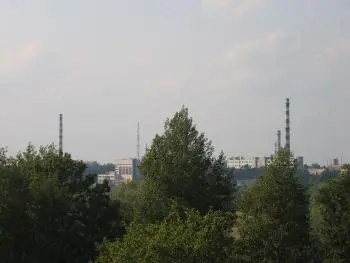
Russia is one of the main producers and consumers of nuclear energy in the world. The first nuclear power plant in Russia, the Obninsk Nuclear Power Plant, began operations in 1954 and since then numerous nuclear plants have been built throughout the country.
Nuclear power currently accounts for about 20% of Russia's electrical power supply. The country has 11 pressurized water reactors (PWR) and 15 boiling water reactors (BWR) in operation, with plans to build several more reactors in the future.
Russia is also one of the leading exporters of nuclear technology and equipment, and has signed agreements to build nuclear power plants in several countries, including China, India and Turkey.
However, the Russian nuclear industry has suffered several accidents and problems in the past, such as the Chernobyl disaster in 1986 (currently on Ukrainian territory), the Kursk nuclear power plant accident in 2000, and the fire at the nuclear processing plant. Mayak nuclear waste in 1957, among others.
Despite these incidents, nuclear power remains an important part of Russia's energy supply, and the Russian government has expressed its intention to continue investing in nuclear technology in the future.
Nuclear power plants in Russia
| Centrales nucléaires | Reactores |
|---|
Uranium mining in Russia
Historically, Russia has been one of the world's leading uranium producers, and has had several operating mines to extract this mineral. Russia's largest uranium mine is the Priargunsky mine, located in the Transbaikalia region near the city of Krasnokamensk in the far eastern part of the country, close to the border with China and Mongolia.
This mine is operated by the Russian state company "ARMZ Uranium Holding Co." (formerly known as "ARMZ Uranium Holding Co." or "ARMZ"), which is a subsidiary of the Russian state nuclear corporation Rosatom.
The Priargunsky mine is one of the main sources of uranium supply for Russia's nuclear industry and has been in operation for decades. The uranium extracted from this mine is used both for the generation of nuclear power and for the production of nuclear materials for civil and military purposes.
Russia's nuclear weapons
Russia possesses a significant arsenal of nuclear weapons. It is one of the globally recognized nuclear powers and is considered to be one of the top two nuclear powers, along with the United States.
The Russian nuclear arsenal is made up of various categories of weapons, including:
-
Intercontinental Ballistic Missiles (ICBMs): Russia has a fleet of land-based ICBMs, including the RS-24 Yars, RT-2PM2 Topol-M, and RS-28 Sarmat, among others. These missiles are designed to carry nuclear warheads over long distances.
-
Submarine-launched ballistic missiles (SLBMs): The Russian Navy operates submarines capable of launching nuclear ballistic missiles from the sea. The RSM-56 Bulava SLBM is one of the missile systems used on these submarines.
-
Nuclear Cruise Missiles: Russia also has nuclear-capable cruise missiles, such as the Kalibr cruise missile, which can be launched from ships and submarines, as well as from aircraft.
-
Nuclear-Capable Strategic Aircraft: The Russian Air Force uses strategic bombers such as the Tu-95 and Tu-160, which can carry and deliver nuclear weapons.
-
Tactical Nuclear Weapons: In addition to its strategic capabilities, Russia also has an inventory of tactical nuclear weapons, intended for use on the battlefield in specific situations.
However, information about the nuclear weapons of any country, including Russia, is highly classified and subject to constant change due to technological developments.